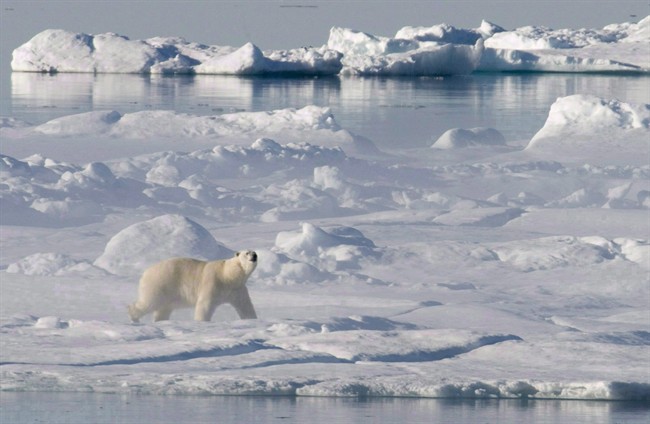Phytoplankton blooms are thriving under thinning Arctic sea ice, and it could disrupt the entire food chain.

Researchers were stunned when they first discovered the blooms under ice in 2011, but they weren’t sure if that always happened and we just didn’t know, or if it was new.
READ MORE: Polar bear population to decline by a third by 2050: study
Now, using mathematical modelling, Harvard researchers have determined “thinning Arctic sea ice may be responsible for frequent and extensive phytoplankton blooms, potentially causing significant disruption in the Arctic food chain.”
Phytoplankton contain chlorophyll and require sunlight in order to live and grow; they provide food for a wide range of sea creatures, from tiny zooplankton to whales.
“They’re really, really important because they’re sort of the base of the food chain,” said Kent Moore, Fulbright visiting chair in Arctic studies at the University of Washington.
Arctic sea ice has been melting to record winter lows, and what’s there is thinner than it used to be.
When under ice cover, Arctic ecosystems are typically dark, but the thinning ice is letting light shine through allowing the phytoplankton to grow earlier than usual.
“So if this means that the timing of peak primary production is going to occur earlier, those animals might not have access to that food that they need to grow and survive.”
READ MORE: Expect more ‘extreme and unusual’ weather in 2017: report
The bright side? There’s a chance this could help some species thrive.
“If they’re able to take advantage of it, and sort of shift adaptively and are able to exploit that resource, they might actually increase in their growth,” said McMeans.
Reliant species will need to adapt — the question is will they do it in time.
READ MORE: How climate change will affect Canadians
Moore calls the blooms a “canary in the coal mine.” We’re not just seeing sea ice melting due to climate change — the entire ecosystem is shifting.
“I don’t know what we can do about it because frankly it’s a symptom of a large-scale change that’s happening in the Arctic,” said Moore.
“The only way to kind of change this is to slow down the warming … there’s nothing else.”








Comments